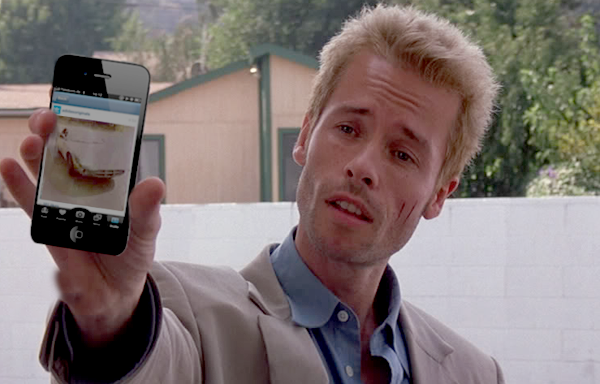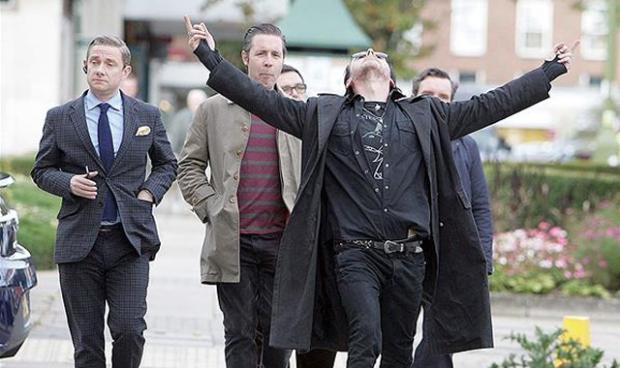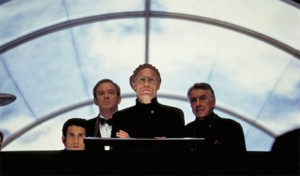– – watch this imagining it’s Janey Smith!!
– – watch this imagining it’s Johannes Göransson!!
– – watch this imagining it’s Alt Lit in toto!!
(just kidding… just kidding)
Halloween Guest Post: SPOOKY SPOOKY by Jereme Dean
Halloween isn’t just the fat kid’s holiday or an excuse for women to dress in revealing costumes, it’s a celebration of the darkness in all of us, that which civilized society is desperate to deny.
Most importantly, it’s a reason to watch kick-ass movies.
Below is a list of films, via youtube, that most probably haven’t seen. The quality of some are moderate, but enjoyable, and adds to the charm of the film, especially those from the seventies.
I feel like most people right now watch whatever is conveniently served via Netflix, Amazon or Hulu The hunt has been lost with the near death of the video store. Something I personally dislike.
My goal isn’t just to talk about movies but also to encourage people to go outside of their cycles, to look for films worth remembering.
Happy Halloween, shitheads.
Memento Mori

Before the entitled enthusiasm of Yolo, there was Memento mori, of essentially the same message, as conveyed by endless still lives centered around the human skull. “Remember that you will die,” in contrast to “you only live once,” is grim not because of death, but that — like children with brushing teeth, or a guy on his anniversary — we must constantly be reminded of it. Had the makers of Memento (2000) known about Instagram, its screenplay might have worked differently, with our more efficient protagonist streamlining his way through the narrative. Instagram supplements its photos with immediate nostalgia, as if we — in our frantic only living once — could no longer wait for an event to age naturally. We wanted quick memories of moments which seemed like they deserved to outlast time. On April 12, 2012, Facebook bought Instagram for $1 billion dollars, and later that year, changed its copyright section in the Terms of Service such that any user content could be sold to third parties without notification or compensation. This would not be a problem, as users would be flattered, floored even, to find their trite moments corporately noticed. Call it inverse stock photography. Leonard Shelby (Guy Pierce) suffers from anterograde amnesia, chasing suspect signs and symbols, stuck in the purgatory of self-deception. The inability to produce new memories is far more tragic than the more common retrograde amnesia, in which one loses their past but may produce a new one starting at the point of their affliction. It is, in a way, being born again. In 1972, Polaroid introduced “instant film,” what became subsequently known by the company’s name. The immediacy of a memory, as commemoration of a transient life, may be archaic after all. The polaroid’s faded light and approximate shadows were less of an aesthetic than merely technological constraints at the time. As the inferior image slowly surfaced from the depths of that lush creamy void, the exhilarated holder would compulsively shake the photograph at every moment of its development, as if to summon more memories.
[This post’s incipient idea is indebted in large part to this tweet.]
….even if you don’t help them give birth to Lenses (“a messy, caustic bunch. Inherently unclean, fibrillating, picking, shifting in and out of dark rooms”) you should definitely check out Jake and Barrett’s creepy, unnerving video
(click here)
Home Alone

What if Macaulay Culkin’s parents never came home after Christmas and the movie just ended. What if his Munchian “scream” stayed glued that way, in some German expressionist hell. The aftershave wore off, his soft cheeks speckled with facial hair growth as testosterone came, the perceived alienation of adolescence followed by the real one—of traffic jams, grocery store lines, and distracted doctors who don’t look you in the eye—of adulthood, our walking parody of actualized nightmares. Every week or so, new burglars (subconsciously, pedophiles) would try to break in, and Kevin’s contraptions of evasion would become more and more sophisticated, personal and sadistic, until they resembled the death machines in Saw. In rare footage of Jeffrey Dahmer being filmed during Christmas by his father in the living room next to a tree, ridden with then technology’s VCR static, he leans away with such repulsion—for whom, one wonders—that you mistake him for a vanishing point, like some Renaissance man finally understanding depth perception. After the bodies and/or their parts were discovered in Dahmer’s apartment, they tore down the famous-yet-unrentable building, leaving all the residents at the whim of city housing. Jeffrey’s neighbor and former friend, a big black Baptisty woman, recalled having her “sanity pushed to the limit” having eaten sandwiches at his home. “I have probably eaten someone’s body part,” she says, addressing the camera in eerie second person, “how dare you do this to me?”
Grunion Run by Juliet Escoria
#3: SELF-LOATHING
Video for “Grunion Run,” a story from Juliet Escoria’s collection BLACK CLOUD, due out in 2014 from Civil Coping Mechanisms.
Story originally published in full here.
25 Pints: The World’s End
[Update 1 September: Since posting this, I’ve seen The World’s End a second time, which radically changed my opinion of it. I now think it an extremely complex film and a masterpiece, perhaps even Wright’s best work to date—see my second attempt at a review/analysis.]
1. I love everything that Edgar Wright has made.
2. Spaced is one of the cleverest sitcoms I’ve ever seen, demonstrating repeatedly how innovation can be wrested from the most hackneyed cliches of a given form.
3. Shaun of the Dead I rank among the greatest zombie films made, the full equal of Night of the Living Dead and (the original) Dawn of the Dead.
4. Hot Fuzz is probably Wright’s best film to date; three viewings in, I’m still grasping its subtleties.
5. Scott Pilgrim vs. the World is my probably favorite film of the past three years—when I am honest with myself, I’m forced to admit that I love it even more than Drive or The Ghost Writer.
6. Edgar Wright is the only celebrity that I follow on Twitter.
7. I now go into everything that he makes expecting nothing short of sheer brilliance and genius.
8. I went to see The World’s End opening day.
9. It pains me greatly to say that the movie is, to date, my least favorite work of his.
#LINDSAYSNEXTCHAPTER (/& EXTREME EXTREME TRANSFERENCE)
RUMORS
In a 2010 Grace Kelly inspired front-cover profile of Lohan for Vanity Fair, the Nancy Jo Sales we know and love states: “Lindsay looked a little raw. And yet shining through her worry and stress and whatever else was currently affecting her mood was her all-American beauty, finer and more delicate in person than in pictures. She still looked like a movie star. She smelled of cigarettes and exotic perfume.”
A very embarrassing thing I have fully embraced about myself is that my brain holds too much information about Lindsay Lohan. In a hypothetical quiz where I was presented with a random photo of the actress, I would swiftly be able to easily identify what specific era it is derived from, as well as extensive details that to someone unfamiliar with her saga would seem chimerical. When names like Patrick Aufdenkamp become familiar, I begin to wonder why I care so much. There is an element of irony in my admiration, but there is no doubt I do hold a positive stance about the starlett.
Tabloids and gossip magazines often report the behaviors of young stars. A large segment of the tabloids focus on those who act entitled and expect special treatment due to their fame. The inquiry ‘Don’t you know who I am?‘ is most frequently perceived as pompous, but maybe it should also be interpreted as the absolute cry for help. The person posing such a self-important question is so unaware of his/her reality that s/he needs others to remind him/her of it. The worth or lack of worth ultimately appears to fully depend on the recognizability of the individual.
TRUTHS
In “The Schema of Mass Culture,” Adorno argues that the commodification of the cultural industry ceases its distinction from pragmatic life: “On all sides the borderline between culture and empirical reality becomes more and more indistinct.” Consequently, the individuals who find themselves in the culture industry confront the loss of their private reality, especially when their public presence is one in which they are investing in to develop a personal brand. As the person becomes the product, the risk of losing a part of their previously held individuality becomes grave: the personality features that are expected to generate more profit will comprise the new “person,” more representative of the brand/ product.

 Stephanie Barber’s movie
Stephanie Barber’s movie 


